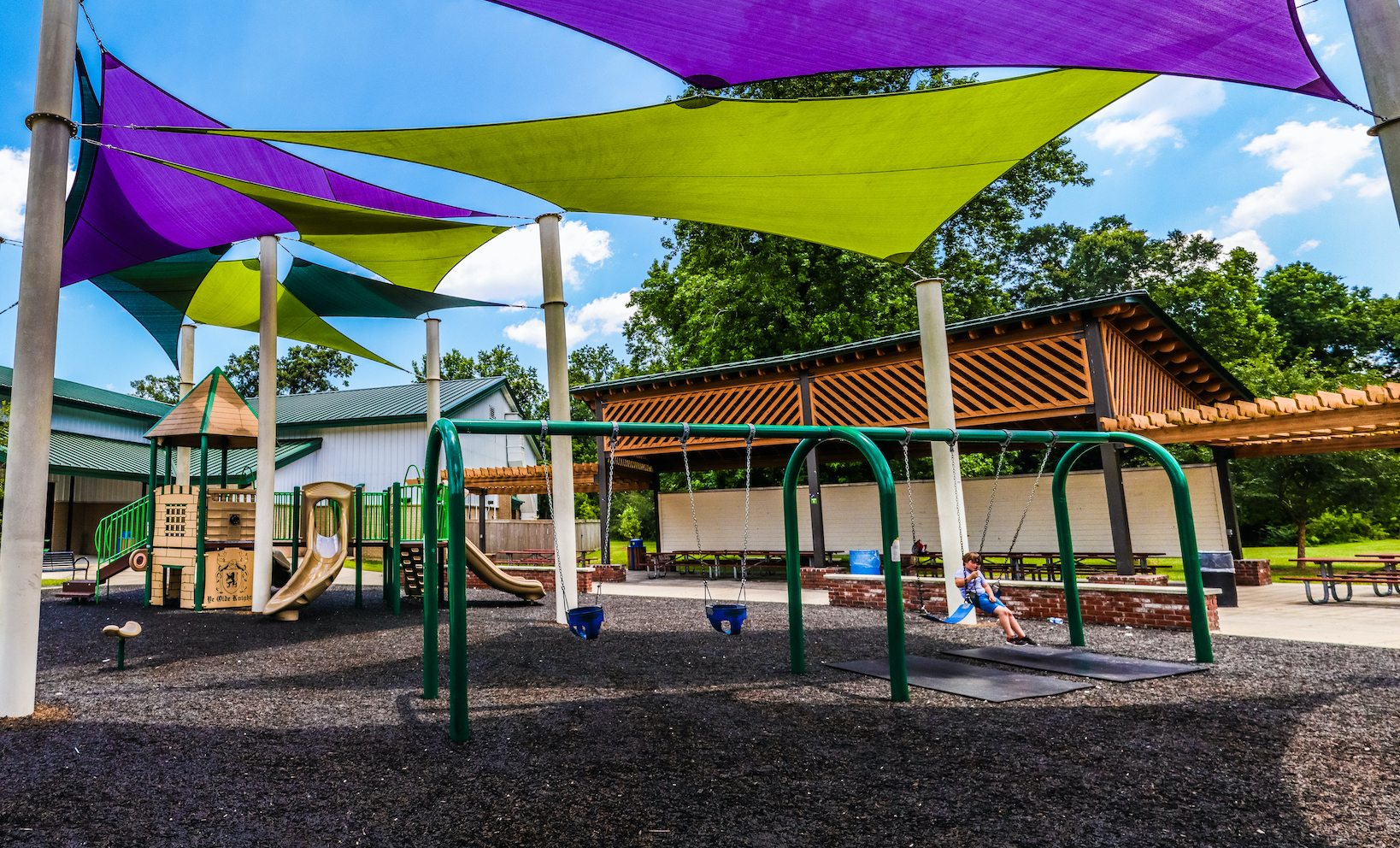
Greenways History
Greenways and Blueways History
BREC Greenway Master Plans
BREC's Capital Area Pathways Project (CAPP) was an initiative to identify routes and build a network of connecting trails and greenways throughout East Baton Rouge Parish. The BREC Commission approved the Proposed Parish Trails Master Plan on October 22, 2015. The routes indicated were derived through public input at workshops held by BREC to identify the most desirable trail corridors that provide access to BREC parks and other points of interest in the community. BREC, in the interest of public safety, has located pathways off of roadways within public rights of way such as utility, stream, and drainage corridors. The CAPP Plan illustrated proposed trails, identified existing segments as well as those implemented in cooperation with other local organizations (including the proposed EBRP Loop and Levee Trail and on-street pathways), and locates BREC parks. In 2018, BREC and several Baton Rouge organizations/stakeholders began a joint master planning process, incorporating the CAPP plan, identifying needed on-street connections, and recommending additional greenway components. The resulting plan was approved and adopted in 2020 by the BREC Commission and EBR City-Parish.
BREC Blueway Master Plan
The Blueways trail effort also began as part of the Capital Area Pathways Project (CAPP), and initiative intended to identify routes and build a network of connecting trails and greenways throughout East Baton Rouge Parish. Blueways provides public access to local waterways through the construction of canoe-kayak launches designed to accommodate non-motorized paddle craft. The first parish waterway access was completed in 2017 at Highland Road Park on Bayou Fountain. Additional waterway accesses are planned at Airline Highway Park on Ward Creek and Manchac Park on Bayou Manchac.
Timeline
Click years to expand and review timeline
Pre-2004
- 1970-1980 – The Scotlandville Parkway was built in conjunction with Interstate I-110 to provide the community a recreational asset. It stretches from Monte Sano to Scenic Highway and includes walking trails, pocket parks, and access to nature.
2004-2010
- 2004 – The inception of the CAPP program can be linked to the “Imagine Your Parks” Strategic Planning Process. Public interest focused on trails and use for exercise or commuting to parks.
- 2006 – BREC Trail Route Planning Process to gather public input for connectivity trail routes.
- 2007 – Preliminary brainstorming map developed to illustrate public pathway route interest. Developer Richard Carmouche expresses interest in joint venture to develop trails in Ward Creek corridor that becomes catalyst for first CAPP trail project. Ed McBrayer from Atlanta Path Foundation speaks at one in a series of BREC public trail planning meetings.
- 2008 – BREC Commission unanimously approves Ward-Dawson Creek as first linear park corridor. Initial 4.4 mile corridor stretches from Siegen to Bluebonnet along Dawson and Ward Creeks. Medical community interest in the project leads to naming the project the “Medical Mile”. Staff begins feasibility study, researching Right of Way and servitude acquisitions.
- 2009 – Gil Penalosa of Walk and Bike for Life speaks at BREC public trails meeting
- 2010 – Design contract signed for Ward Creek “Medical Mile” segment from Mall of LA Blvd. to Siegen Overpass
2011-2015
- 2011 – Design contract signed for Ward Creek “Medical Mile” segment from Bluebonnet Blvd. to Mall of LA Blvd.
- 2012 – “Health Loop” trail route mapping developed indicating a continuation of the pathway from the initial Ward Creek “Medical Mile” westward to connect to OLOL Hospital and its surrounding medical facilities, to Perkins Road Park, Pennington Biomedical Research Center, eastward along Dawson Creek to link to the Grove across Ward Creek to Morning Glen. The trail system began to be viewed as region-wide with connections to other parishes and cities via the levee trail and future connection to other regional trail systems. CAPP Groundbreaking Ceremony and construction begins on initial phase of Ward Creek “Medial Mile” trail segments from Bluebonnet Blvd. to St. George School. Blue Cross and Blue Shield Foundation donate $1 million to the CAPP Trail Project and for purchase of a mobile recreation unit.
- 2013 – Construction complete on initial phase of Ward Creek “Medical Mile” trail segments.
- 2014 – Ward Creek Bridge goes into redesign in the interest of reducing construction costs. Bridge implementation stalls due to high implementation cost, project enters litigation. Siegen Extension project to Tuscany Villas enters design phase.
- 2015 – CAPP Proposed Parish Trails Master Plan approved by the BREC Commission on October 22, 2015. Full time Trail Planner hired to implement Master Plan. Perkins Road Park and Pennington Trail enter construction phase. CAPP Ward Creek “Health Loop” becomes CAPP Ward Creek “Health Loop” to coincide with the name change of the new Baton Rouge “Health District” whose focus is on promoting healthy living.
2016-2020
- 2016 – Perkins Road Park/Pennington Trail construction completed and opened to the public. Design contracts signed for Greenwood Park and Bluebonnet Extension Projects. Siegen Extension project to Tuscany Villas enters construction phase. Grant funding received from LA Recreational Trail Program toward implementation of Ward Creek “Health Loop” Pecue Extension Project which will extend the trail to Pecue Lane and provide recreational trail benefits to residents in the southeast portion of the parish. Staff working on solutions to provide a bridged crossing of Ward Creek.
- 2017 – BREC receives $3.7 million Congestion, Mitigation, and Air Quality (CMAQ) grant to construction trail from Scotlandville Parkway to Downtown.
- 2017 - BREC creates Blueway Concept plan and constructs first Blueway launch at Highland Road Park on Bayou Manchac.
- 2019 - Siegen Extension from Siegen Overpass to Tuscany Villas.
- 2019 - Ward Creek Bridge connects the initial segments that terminate at Ward Creek and provides a public crossing to destinations geographically separated by the waterway.
- 2020 – The East Baton Rouge Pedestrian and Bicycle Master Plan was approved and adopted by the BREC Commission and EBR City-Parish. The CAPP plan was incorporated into the overall master plan.